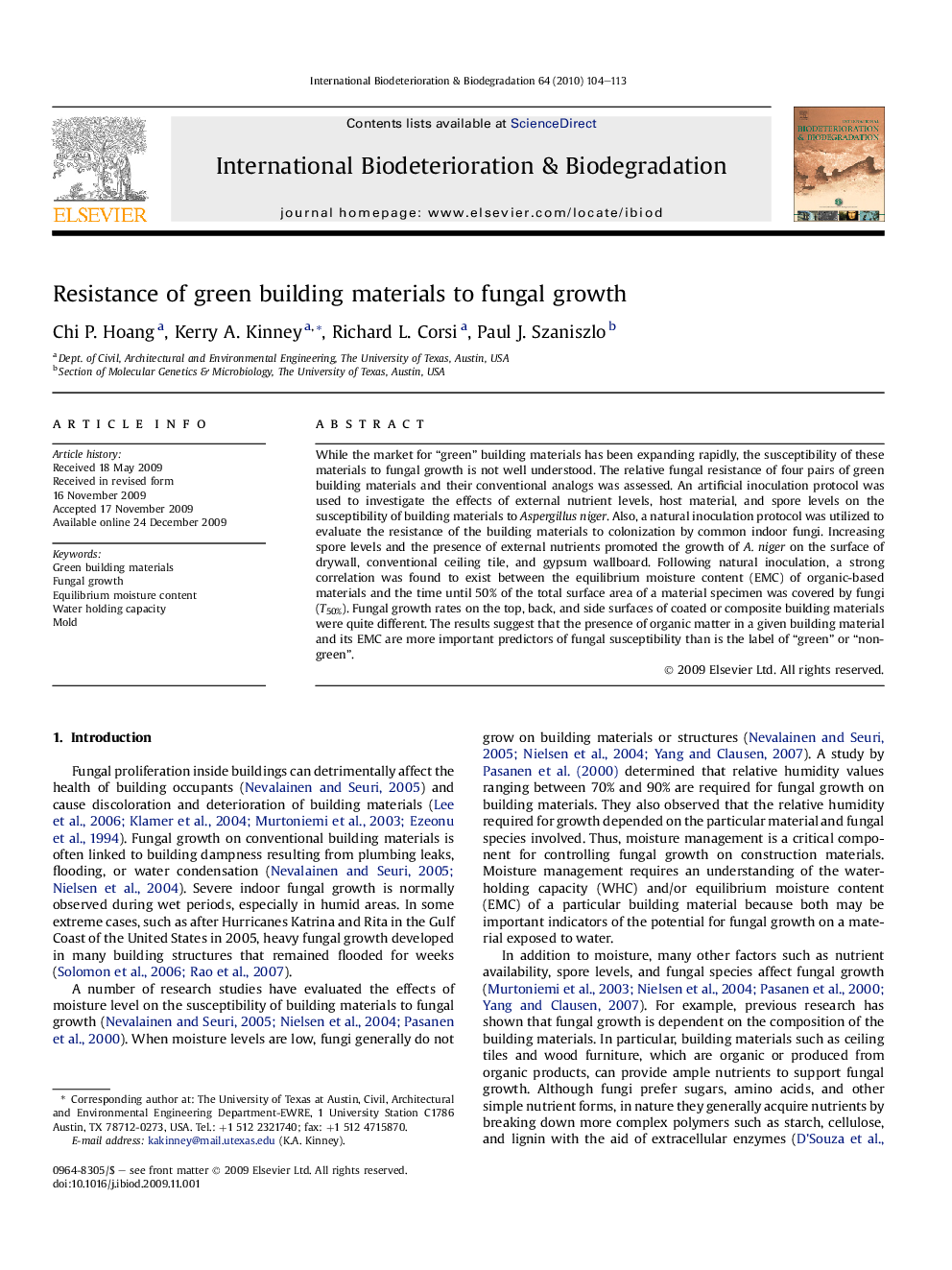| Article ID | Journal | Published Year | Pages | File Type |
|---|---|---|---|---|
| 4365721 | International Biodeterioration & Biodegradation | 2010 | 10 Pages |
While the market for “green” building materials has been expanding rapidly, the susceptibility of these materials to fungal growth is not well understood. The relative fungal resistance of four pairs of green building materials and their conventional analogs was assessed. An artificial inoculation protocol was used to investigate the effects of external nutrient levels, host material, and spore levels on the susceptibility of building materials to Aspergillus niger. Also, a natural inoculation protocol was utilized to evaluate the resistance of the building materials to colonization by common indoor fungi. Increasing spore levels and the presence of external nutrients promoted the growth of A. niger on the surface of drywall, conventional ceiling tile, and gypsum wallboard. Following natural inoculation, a strong correlation was found to exist between the equilibrium moisture content (EMC) of organic-based materials and the time until 50% of the total surface area of a material specimen was covered by fungi (T50%). Fungal growth rates on the top, back, and side surfaces of coated or composite building materials were quite different. The results suggest that the presence of organic matter in a given building material and its EMC are more important predictors of fungal susceptibility than is the label of “green” or “non-green”.
